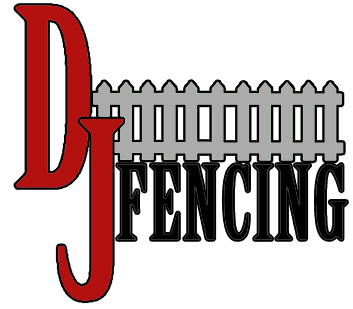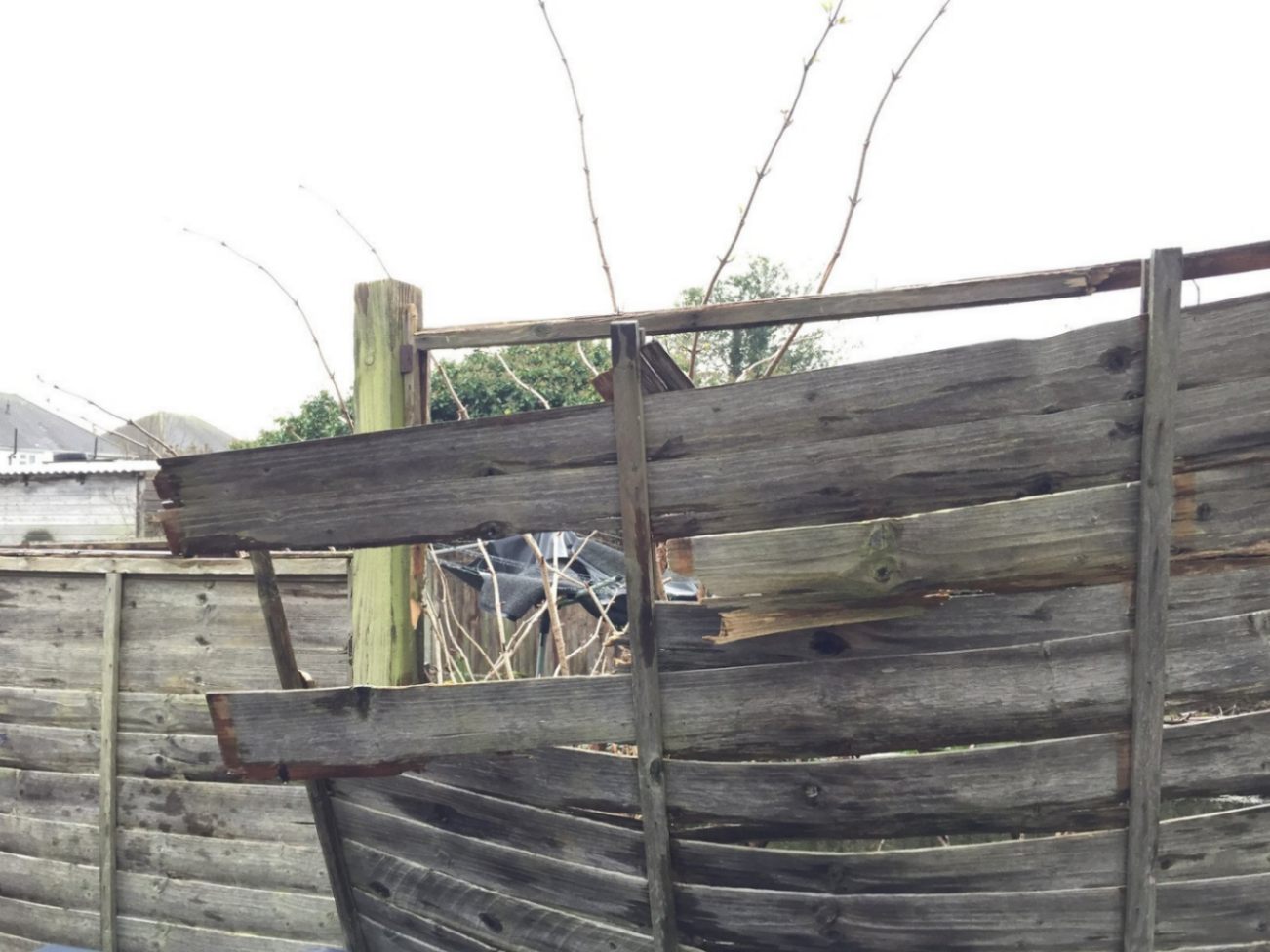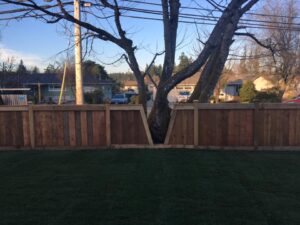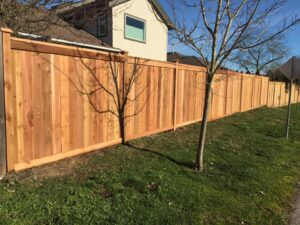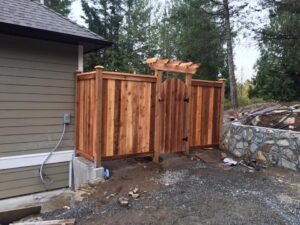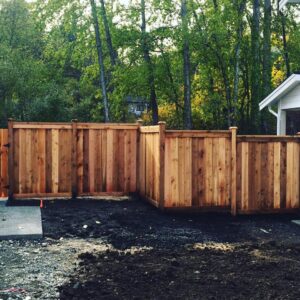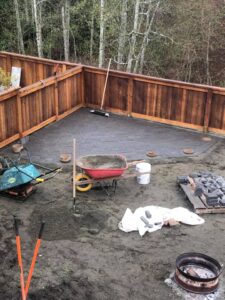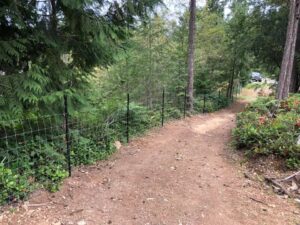When it comes to repairing broken or damaged wooden fence panels, a step-by-step approach is essential. Start by checking the extent of the damage—from cracks to rot—before deciding what to do next. With the right tools and materials, you can handle minor fixes yourself or fully replace panels when needed. Understanding these steps will help keep your fence strong and looking good. But knowing when to call a professional can save you time and hassle.
Key Takeaways
- Look for visible damage like cracks, warping, or loose boards before starting any work.
- Use wood filler for small cracks, and wood glue with clamps for bigger splits.
- Replace badly damaged panels with matching materials and apply a weatherproof finish.
- Fix loose posts with quick-setting concrete, making sure they’re level and well-supported.
- Maintain your fence regularly with sealants and inspections to prevent future problems.
Assessing the Damage to Your Wooden Fence
How can you tell how badly your wooden fence is damaged? Start by checking for clear signs like cracks, warping, or discolouration.
Look for loose boards or sections that may have moved due to wind, rain, or insects. Gently push on the panels—if they wobble, that’s a sign of weakness.
Pay close attention to the base of the posts, where rot often starts. Look for fungus or soft spots. Make a note of everything you find so you know what needs fixing straight away.
A full inspection will help you plan the repairs properly and ensure nothing important is missed.
Gathering the Necessary Tools and Materials
Before repairing your wooden fence panels, make sure you’ve got all the tools and materials you’ll need.
Essential Tools
Start with a hammer and pry bar to remove broken parts.
A power drill will help you secure new sections, and a saw (hand or electric) is needed for cutting wood to size.
Use a tape measure and spirit level to make sure everything fits and lines up properly. Don’t forget safety goggles and gloves to protect yourself from splinters and sharp bits.
A strong ladder might also come in handy for reaching higher parts.
Good-quality tools will make the job easier, quicker, and safer.
Materials for Repairs
To fix your fence properly, you’ll need materials that suit your specific repair.
Choose durable wood like cedar or pressure-treated pine that can handle the weather.
Use wood glue and clamps for cracks or splits, and pick nails or screws that match your current ones to keep the fence looking neat.
Don’t forget wood filler for small holes, and apply a stain or sealant to protect your repair and match the rest of the fence.
Having everything ready before you start will make the process much smoother.
Preparing the Area for Repair
Clear the Work Area
Before getting started, clear the space around the fence. Remove anything in the way, like branches, tools, or garden furniture.
Clean up any old wood or debris so you’ve got a safe and tidy spot to work in. Wear gloves and eye protection to keep yourself safe, especially when using power tools.
A neat work area makes it easier to focus and get the job done right.
Gather Necessary Tools
Double-check you’ve got everything nearby: hammer, drill, saw, tape measure, level, safety gear, and more.
Make sure your tools are in good shape, and keep them organised while working.
Being prepared like this will help the job go quicker and with fewer mistakes.
Repairing Minor Damage: Cracks and Splits
Even though wooden fences are made to handle the weather, cracks and splits can happen over time.
To fix them, clean the damaged area first. Then use an outdoor wood filler for small cracks. Smooth it out so it blends in.
For bigger splits, use wood glue and clamps to hold the pieces together firmly. Once dry, seal the area to protect it from future damage.
Regular checks and upkeep will stop small issues from getting worse and keep your fence looking its best.
Replacing a Broken Fence Panel
Assessing the Damage
If a panel is badly broken, check if it’s just the panel or if the posts are also damaged.
Look for signs of sagging or loose posts. Examine the panel for rot, cracks, or warping.
Also, check what type of wood your fence uses—like cedar or pine—so your replacement matches.
This helps keep the fence strong and looking consistent.
Selecting Replacement Materials
Choose wood that matches your current fence—cedar, pine, or redwood are common choices.
If your fence is stained or painted, try to match the colour so everything blends nicely. You can take a piece to the shop for help matching it.
Make sure the new materials are treated to resist weather, so they last longer and don’t rot.
Fixing Loose or Wobbly Posts
Loose posts can make your whole fence unstable.
First, figure out why the post is loose. If it’s just moved a bit, you might be able to fix it by packing soil around the base.
If it’s badly damaged or leans too much, dig around it and set it in quick-setting concrete. Use a level to make sure it’s straight and brace it while the concrete sets.
Check all your posts regularly to catch issues early.
Treating for Pests and Rot
Rot and insects can seriously damage your fence if left untreated.
Look for signs like holes, sawdust, or soft wood. Use a suitable insecticide for pests like termites.
If you find rot, remove the bad wood and treat the rest with a good wood preservative. Apply sealant to block moisture and prevent more damage.
Also, check that water doesn’t collect near the base of your fence—good drainage helps prevent rot.
Sanding and Finishing Touches
Once repairs are done, it’s time to smooth and protect the surface.
Start with rough sandpaper (around 80 grit) to get rid of rough patches, then use a finer grit (120) for a smooth finish. Always sand along the wood grain.
After sanding, wipe away any dust. Then apply a wood stain or sealant with a brush or roller.
This gives your fence a clean look and protects it from sun and rain.
Regular Maintenance Tips for Longevity
To keep your fence in good shape, do some maintenance now and then.
Use a sealant every 2–3 years to stop moisture and UV rays from causing damage.
Check your fence at the start of each season for cracks, loose boards, or signs of wear. Fix problems early to avoid bigger issues later.
Clear away plants and debris from the bottom of the fence to prevent rot and pests.
If the finish starts to wear, repaint or re-stain it.
These simple steps will help your fence last longer and stay strong.
When to Call a Professional
Not sure if you should fix the fence yourself?
If the damage is serious—like leaning posts or several broken panels—it’s best to call an expert.
Also, if you’re dealing with rotten posts, insect damage, or repairs that need special tools or carpentry skills, leave it to the pros.
If your fence is needed for security or privacy, and you want the job done quickly and safely, hiring help makes sense.
Frequently Asked Questions
How can I stop my fence from rotting?
Use a sealant to block moisture, and make sure water drains away from the base. Regular checks and good upkeep help prevent rot.
What kind of wood is best for repairs?
Cedar is great for weather resistance, and pressure-treated wood lasts a long time. Match the type of wood your fence already has.
How often should I stain or paint my fence?
Every 3 to 5 years, depending on weather. Regular staining protects the wood and keeps it looking nice.
Can I fix my fence in winter?
Yes, but cold weather can affect how materials work. Use the right products and prepare properly for best results.
Are there eco-friendly treatments?
Yes, you can use natural preservatives and biodegradable sealants that are safer for the environment.
Conclusion
By following these steps, you’ll keep your wooden fence strong, safe, and looking good. Tackle small issues early, replace badly damaged panels, and treat for pests and rot to keep your fence lasting longer. Keep up with regular maintenance like sealing and inspections. And if you ever feel out of your depth, don’t hesitate to call a professional to handle the job properly.
